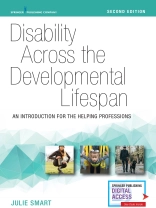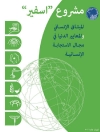This is the only text to examine the experience of disability in relation to theories of human growth and development. It provides a foundational and comprehensive examination of disability that encompasses the intellectual, psychiatric, physical, and social arenas. The second edition is updated to underscore its versatility as an introductory text about the developmental tasks of people with disabilities for all the helping professions. Reorganized to illuminate the book’s interdisciplinary focus, it includes new demographics, new case studies and first-person accounts, discussions on cultural aspects of disabilities, family concerns, and more.
The text delivers practice guidelines for each of the conventional life stages and describes the developmental tasks of individuals with disabilities (IWDs). It emphasizes the positive trend in the perception of IWDs as normal and underscores the fact that IWDs have the same motivations, emotions, and goals as those without disabilities. Learning activities, suggestions for writing exercises, and websites for further study reinforce learning, as do graphs and charts illustrating trends and demographics.
- Introductory chapter on understanding disability
- Demographic updates throughout
- New case studies and first-person accounts
- Expanded discussions about cultural considerations, intersectionality, and family considerations
- Updated Instructor’s Manual and an Instructor’s Test Bank
NEW TO THE SECOND EDITION:
- Examines the conventional stages of human growth and development from the perspective of individuals with disabilities
- Integrates disability concepts with developmental theories and stages of the lifespan
- Addresses common ethical issues to illuminate the real-world implications faced by individuals with disabilities and their families
- Includes learning activities, suggestions for writing exercises, and websites for further study
- Purchase includes digital access for use on most mobile devices or computers.
KEY FEATURES:
表中的内容
Preface
Disability and Developmental Stages: Introduction
PART I. DISABILITY AND DEMOGRAPHICS
1. Understanding Disability
2. Basic Principles of Developmental Theories and Demographic Changes
3. Major Demographic Changes and Ways in Which Disabilities Interact With Stages of Development
PART II. THE DEVELOPMENTAL STAGES
4. Pregnancy and Infancy
5. Toddlerhood and Early Childhood: Ages 18 Months to 5 Years
6. School Age: Ages 5 to 12 Years
7. Adolescence (Ages 13 to 18) and Emerging Adulthood (Ages 19 to 25)
8. Adulthood Ages (25 to 40) and Midlife (Ages 40 to 60)
9. The Young Elderly (Ages 60 to 75) and the Old Elderly (Ages 75 Until Death), and the Longevity Revolution or the Silver Tsunami
PART III. ACQUISITION OF A DISABILITY AS A SOCIALLY SANCTIONED DEVELOPMENTAL TASK
10. Connecting the Dots: Acquisition of a Disability as a Socially Sanctioned and Supported Developmental Task
Electronic Resources
Appendix: Additional Readings
Indexii
关于作者
Julie Smart, Ph D, was on the faculty at Utah State for 24 years, teaching in a graduate Rehabilitation Counseling program.












